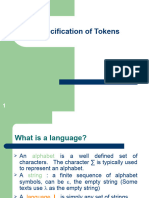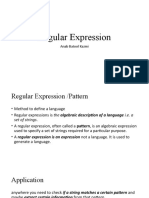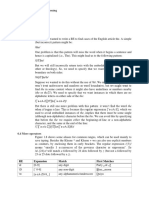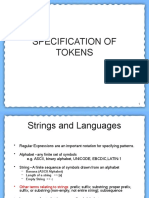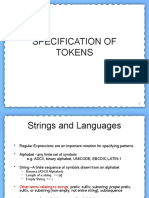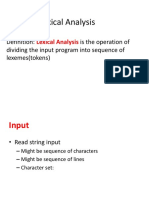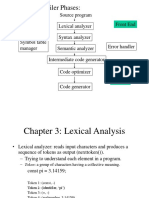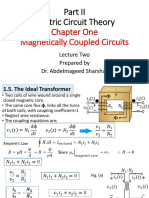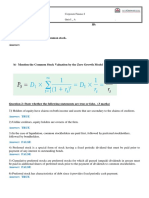0% found this document useful (0 votes)
13 views1 pageRegular Expression
The document outlines the alphabet for a programming language, including characters, numbers, and operators. It provides regular expressions (RE) for integers, floating integers, identifiers, strings, new lines, and keywords. Additionally, it details relation operations and various operators used in the language.
Uploaded by
YousefCopyright
© © All Rights Reserved
We take content rights seriously. If you suspect this is your content, claim it here.
Available Formats
Download as PDF, TXT or read online on Scribd
0% found this document useful (0 votes)
13 views1 pageRegular Expression
The document outlines the alphabet for a programming language, including characters, numbers, and operators. It provides regular expressions (RE) for integers, floating integers, identifiers, strings, new lines, and keywords. Additionally, it details relation operations and various operators used in the language.
Uploaded by
YousefCopyright
© © All Rights Reserved
We take content rights seriously. If you suspect this is your content, claim it here.
Available Formats
Download as PDF, TXT or read online on Scribd
/ 1
